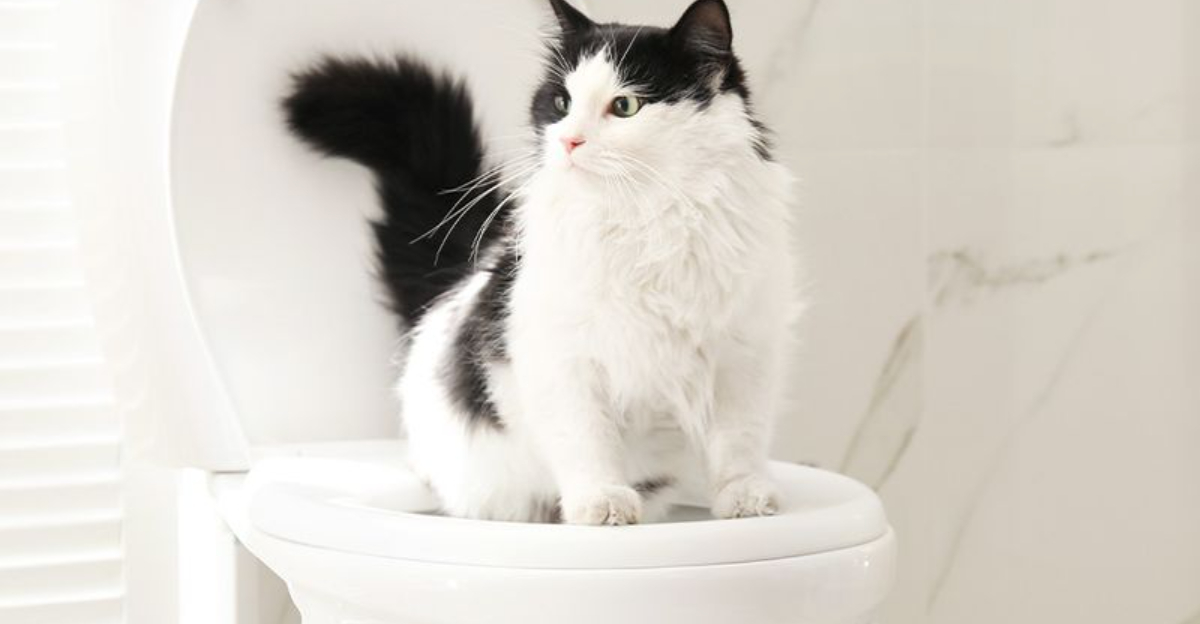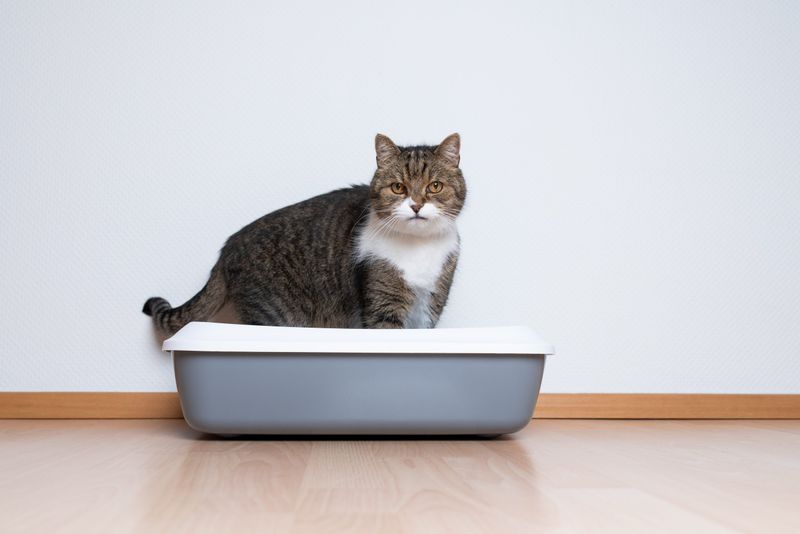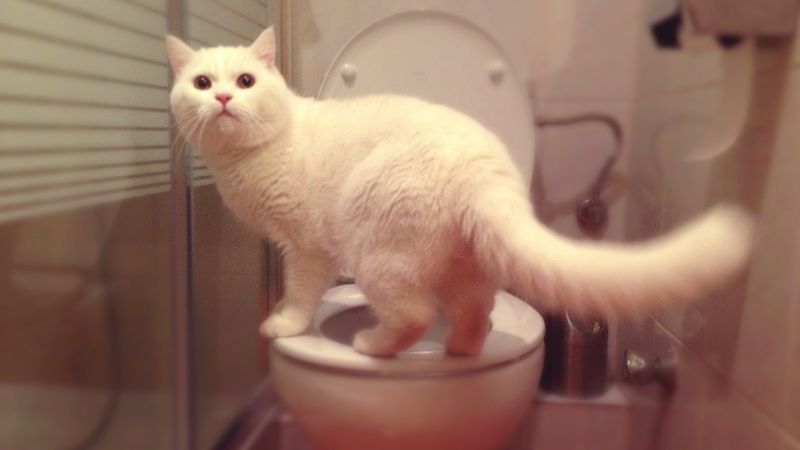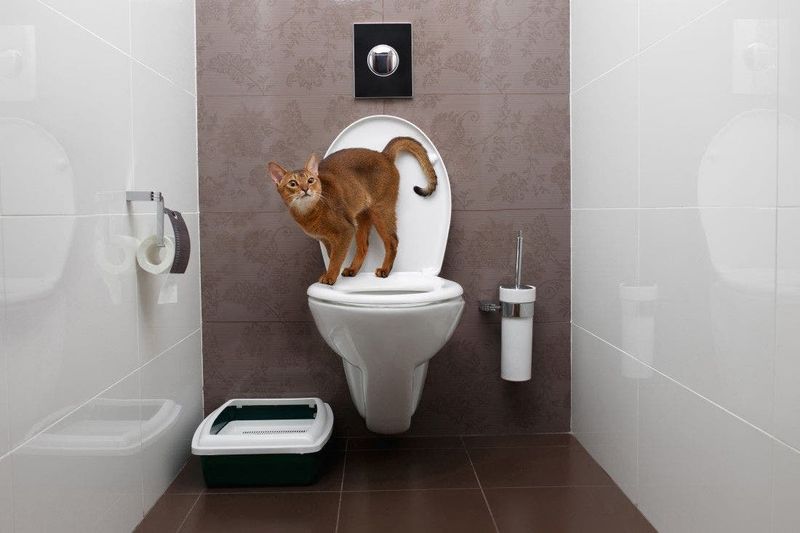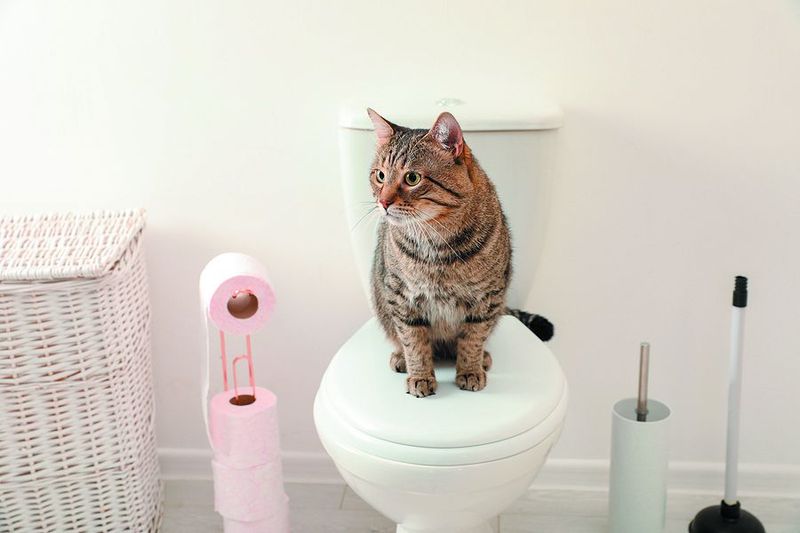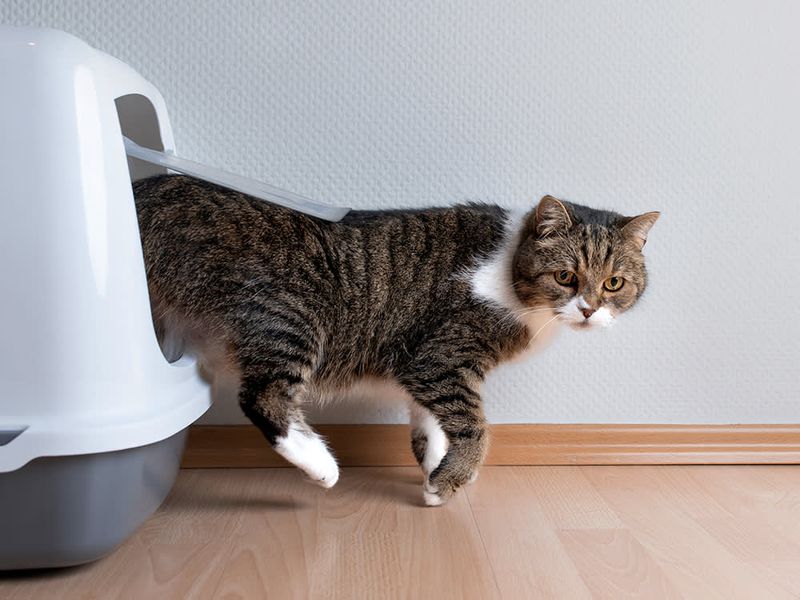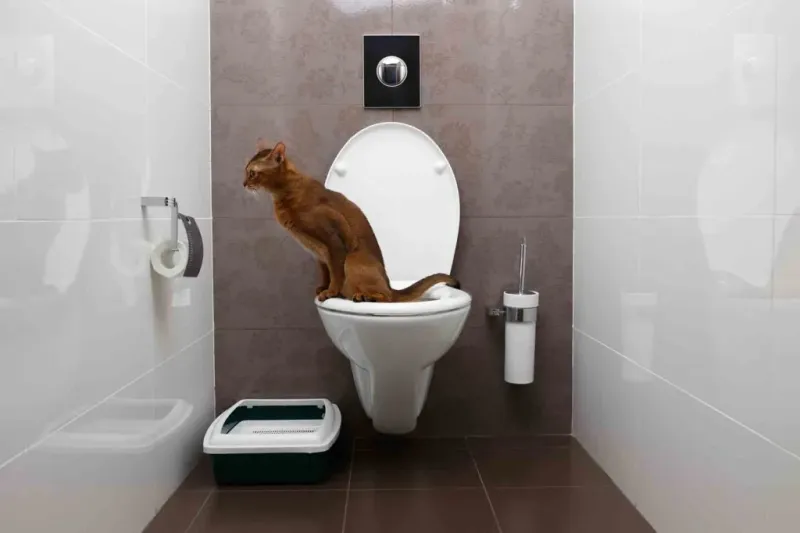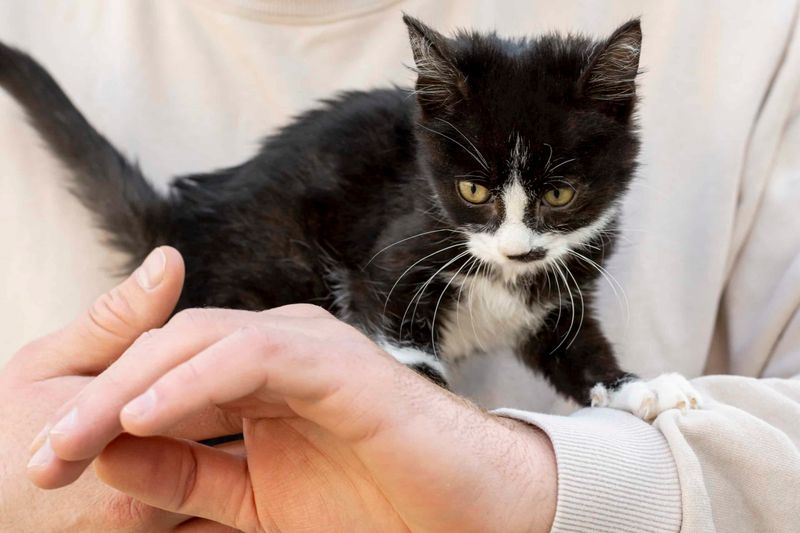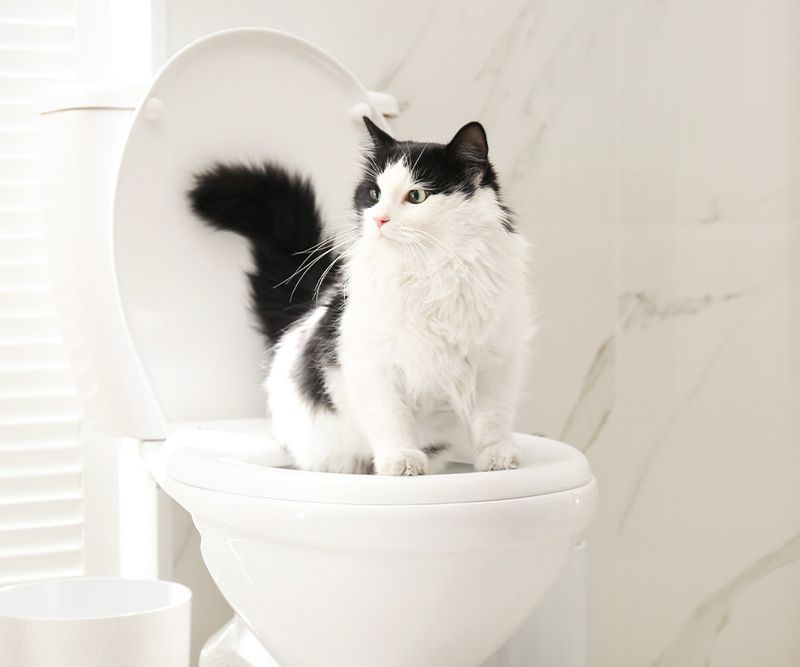📖 Table of Content:
Training a cat to use the toilet might sound like the ultimate convenience. After all, no more scooping litter, no more buying bags of sand, and one less odor to worry about — right? It’s easy to see why the idea has become so popular in videos and blogs across the internet.
However, just because something is possible doesn’t mean it’s in your cat’s best interest. Cats are highly sensitive creatures with strong natural instincts, and shifting them away from behaviors they’ve evolved over thousands of years can have serious consequences. Before tossing out the litter box, it’s crucial to understand what you might be risking — for both your feline’s well-being and your own peace of mind.
In this article, we’ll dive into eight thoughtful reasons why you should not toilet train your cat. From instinctual needs to unseen health risks, you’ll get a deeper look into why sticking with a litter box is the far wiser and more compassionate choice.
1. Suppresses Natural Instincts
At their core, cats are hardwired to bury their waste as a survival tactic, masking their scent from predators and rivals. Disrupting this instinct can leave your feline feeling uneasy or even vulnerable in their own home. Over time, suppressed instincts may lead to hidden stress that manifests as behavioral issues. Instead of a confident, relaxed cat, you might notice signs of nervousness or excessive grooming. Instincts aren’t quirks — they are essential parts of your cat’s mental stability. By removing the opportunity to dig and cover, you take away a fundamental element of their daily routine. Preserving natural behaviors is key to preserving your cat’s emotional health.
2. Increased Risk of Accidents
Unlike litter boxes, toilets are not always accessible or consistent in their availability to your cat. Picture this: the bathroom door is accidentally shut, the lid is closed, or the seat is slippery — and suddenly your cat has nowhere to go. Situations like these force cats to find alternatives, often in places you’d rather they didn’t. Moreover, a cat denied its expected place of elimination can develop anxiety around bathroom habits altogether. When accidents happen, it’s not the cat being “bad” — it’s the result of confusing and inconsistent access. Keeping elimination simple and predictable through a litter box is far more secure for everyone. Stability in bathroom habits leads to stability in behavior.
3. Uncomfortable and Unnatural
Standing or balancing on the edge of a cold, smooth toilet seat is neither comfortable nor intuitive for most cats. Small or senior cats especially struggle with the awkward posture, which can create real distress or even injury over time. Climbing onto and maneuvering around a slippery, narrow surface also poses the risk of falls. If your cat associates elimination with fear or discomfort, behavioral regressions like holding in urine (which is medically dangerous) can occur. Litter boxes, by contrast, offer soft, diggable surfaces that feel safe and natural to your feline. Expecting cats to adapt to a human-designed fixture ignores the realities of their physical and emotional needs. Comfort should never be compromised for human convenience.
4. Health Monitoring Challenges
Monitoring your cat’s urine and stool is one of the most crucial tools in early illness detection. Through a litter box, you can notice changes like blood, diarrhea, increased frequency, or strange odors — all warning signs of potential health issues. When a cat uses a toilet, however, these critical details vanish down the drain before you even realize something’s wrong. Regularly missing these early clues can allow minor problems to escalate into emergencies before they’re detected. Cats are notorious for hiding discomfort until it’s severe, making proactive observation through their waste even more essential. A toilet-trained cat essentially takes away a vital source of health information. In a world where early detection can save lives, don’t give up that visibility.
5. High Risk During Emergencies
During stressful situations such as illness, injury, or household changes, toilet-trained cats may refuse to use the toilet altogether. Stress can make even a well-trained feline revert to inappropriate elimination or simply stop going entirely, risking serious medical issues like urinary blockage. Emergencies often leave little time to re-train or adapt your cat back to a litter box. Worse, forcing a sick or frightened cat to balance on a toilet could exacerbate their physical and emotional distress. Swift, low-stress options like a familiar litter box become lifesavers in these scenarios. Preparation for the unexpected is part of good pet ownership, and litter boxes provide a safe, accessible fallback plan. Emergencies demand flexibility that toilet training just can’t offer.
6. Adaptation Challenges
Every cat is different, and not all will respond to toilet training the way tutorials promise. Some may struggle for months without ever fully mastering the unnatural skill, creating ongoing stress and confusion. Cats that fail to adjust may resort to urinating or defecating elsewhere in frustration. Sadly, this often leads to strained relationships between owners and pets, as misunderstandings escalate. Recognizing and respecting your cat’s limits is critical to maintaining their well-being and your bond. Toilet training ignores these individual differences in favor of one-size-fits-all convenience. Trusting your cat’s unique pace and preferences will always lead to better outcomes.
7. Behavioral Regression
Major life changes, such as moving houses or introducing new pets, can shake a cat’s confidence and cause behavioral setbacks. Cats who have been toilet trained may abandon the toilet habit under stress, returning to eliminating in inappropriate places. Retraining a stressed cat to use a toilet again can be even more difficult than starting from scratch. In contrast, a well-maintained litter box offers a familiar, calming option that reassures cats during turbulent times. Behavioral regression is not a “failure” but rather a reflection of deep emotional needs. Reducing the complexity of your cat’s elimination habits helps ensure stability even in rocky periods. When stress hits, simplicity is a true gift.
8. Inconvenience for Owners
Managing a toilet-trained cat often turns out to be far more complicated than just scooping a litter box. Owners must ensure the toilet is always clean, accessible, and available — even if guests are over, repairs are happening, or someone forgets. You may also find yourself needing to assist your cat during the transition phases, which can last for months. Inconsistent maintenance can undo the training altogether, causing additional frustration and mess. Meanwhile, a simple, hygienic litter box offers convenience without unpredictable hurdles. Balancing human schedules and feline needs becomes trickier when the toilet is involved. What seems like a shortcut often becomes a burdensome, ongoing project.
